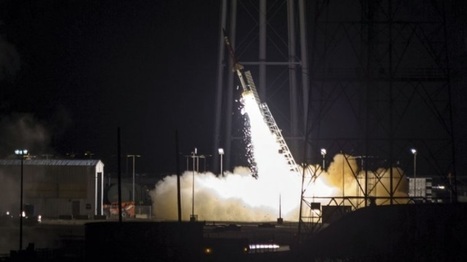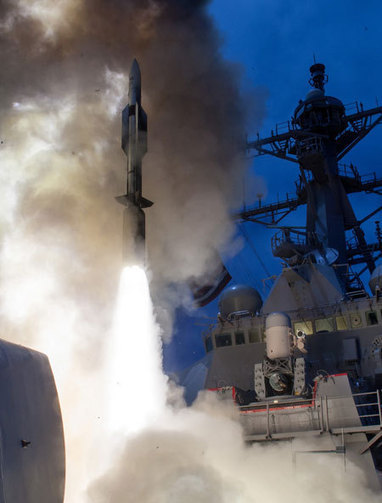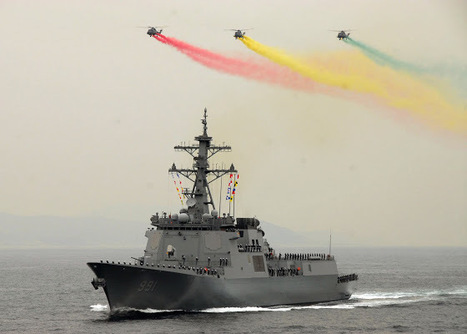The US Missile Defense Agency (MDA) on 24 February demonstrated the ability of Aegis destroyers to co-ordinate and determine the best ship to engage multiple short-range ballistic missile targets launched near simultaneously.
The latest ballistic missile defence (BMD) test, which took place off the coast from Wallops Island, Virginia, demonstrated Lockheed Martin's Distributed Weighted Engagement Scheme (DWES).
The capability enables automatic engagement co-ordination between ships to help avoid having to launch multiple missiles to shoot down the targets, Paul Klammer, director of BMD programmes, integration, and strategy for Lockheed Martin, told reporters on 24 February.
"[We were] testing sophisticated algorithms that we put in place as [part of the] BMD 4 functionality to make sure these ships co-ordinated their engagements and to make sure that the ship that had the best shot at the target took it," he said.
"We reduced duplication of BMD engagements. It also saves on missile expenditures; from an inventory perspective it is important that that functionality works. It also gave us a great opportunity to test that the system works in a raid scenario where you have three very challenging short-range separating BMD targets."
For the test, USS Carney (DDG 64) and USS Gonzalez (DDG 66), both equipped with the Aegis Baseline 4 capability, acquired and tracked three short-range ballistic missile targets launched from NASA's Wallops Flight Facility, Klammer said.
"In this scenario one ship took two shots and one ship took one. The USS Gonzalez took two [shots] based on how DWES [determined] who had best shot. The system can be configured to automatically fire or have operator intervention," he said.
Both ships fired simulated Standard Missile-3s.
Lockheed Martin, the MDA and US Navy (USN) have a lot of data to go through from the event. Klammer noted the DWES algorithm that determines the preferred shooter performed as designed.
A third ship, USS Barry (DDG 52), equipped with Aegis baseline 9, also took part in the test, but it did not participate in the co-ordinated tracking and engagement of the three ballistic missile targets, he added.
"[ Barry was] tracking the three targets and doing simulated engagements similar to what the other ships were doing, except that [ Carney and Gonzalez ] were testing out DWES," Klammer said. " Barry gave us an opportunity to use the latest Baseline 9 build and make sure we could do simultaneous engagements in the same raid-type scenario."
The difference between Carney and Gonzalez equipped with Aegis Baseline 4 and Barry equipped with Baseline 9 is that the baseline 4 ships have a combination of the older UYK military-based and commercial off-the-shelf computers and rely on the ballistic signal processor functionality, Klammer noted.
Barry just received Baseline 9, which has the latest software configuration that brings an integrated air and missile defence capability to the ship. Baseline 9 also has the multi-mission signal processor, which is capable of conducting both air and BMD missions simultaneously.
Aegis Baseline 9 has DWES capability built in. Additionally two cruisers, USS Lake Erie (CG 70) and USS Shiloh (CG 67), have DWES functionality.



 Your new post is loading...
Your new post is loading...










